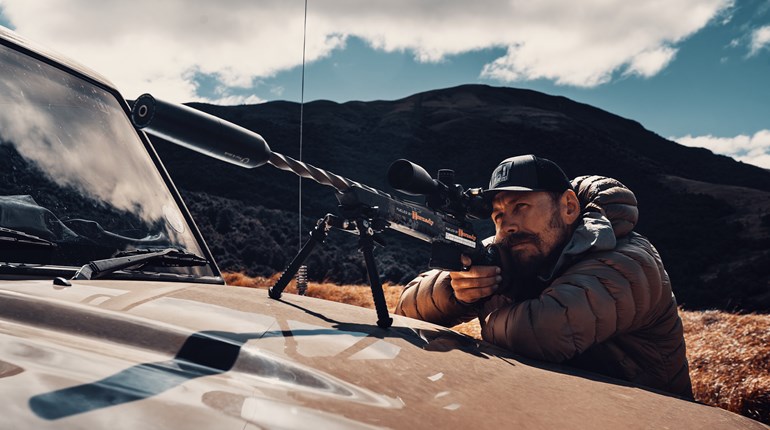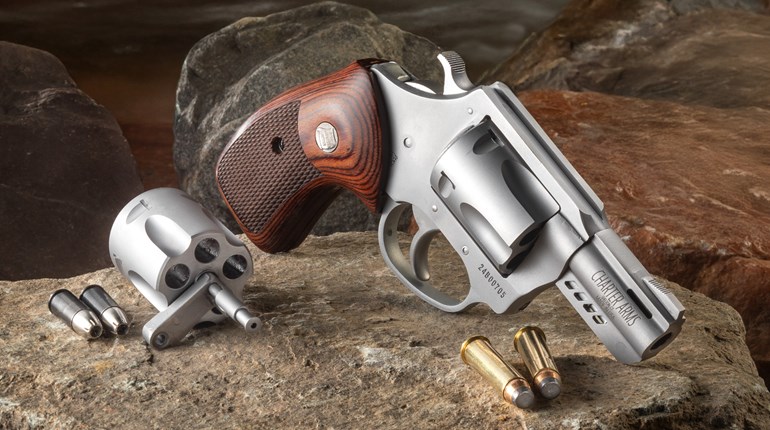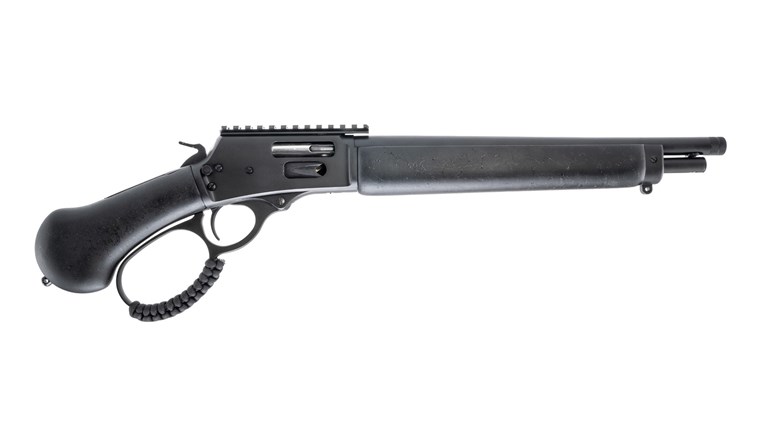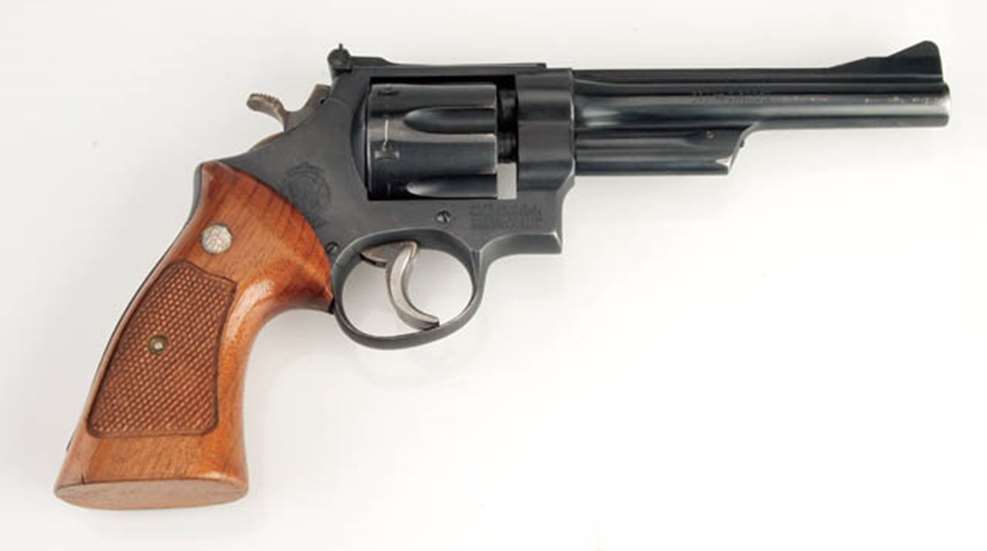
Back when revolvers ruled the law enforcement roost, there were a number of notable sidearms with names that left no doubt as to their intended markets. The Smith & Wesson Military & Police, Bodyguard and Chiefs Special are a few that come to mind.
But, perhaps none bore so noble a moniker as the Highway Patrolman. While the words Highway Patrolman may cause some to ease up on the gas and check the rearview mirror, I immediately think of a syndicated television series that ran from 1955 to 1959.
The Smith & Wesson Highway Patrolman revolver appeared on April 15, 1954, a year before the first episode of "Highway Patrol" aired. It can't be denied the TV show's popularity had a positive effect on sales of Smith & Wesson's newest N frame. But the Highway Patrolman didn't need additional publicity to win over the law enforcement agencies ordering it. They had been attracted to the big double action because of its .357 Mag. chambering, the cartridge for which it was designed. In fact, the cartridge indirectly inspired this no-frills double action.
The genesis of the Highway Patrolman began in 1930, when, in response to requests for a cartridge with more power than the .38 Spl. used in most service revolvers, Smith & Wesson came out with a new load, the .38/.44 S&W Spl. It was the pre-war version of today's +P cartridges. Chambered in what was essentially a Third Model Hand Ejector, the revolver was renamed it the 38/44 Heavy Duty. Thus, you had a beefed-up .38 Spl. revolver built on a .44-caliber frame that could handle the increased velocity and pressure of the new round.
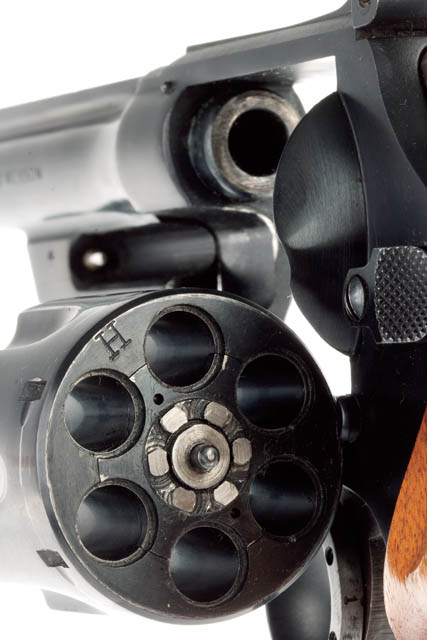
But, there was a problem; the .38 Spl. High-Velocity cartridge, as the .38/.44 S&W Spl. was often called, could also be chambered in weaker, smaller-framed .38 Spl. revolvers, something that would have caused coronaries among today's attorneys. Nonetheless, the new .38/.44 Heavy Duty proved popular. Meanwhile, noted gun writer and ballistician Phil Sharp had been experimenting with high-velocity .38 Spl. loads, and finally convinced Smith & Wesson's Doug Wesson, who in turn convinced the research and development folks at Winchester to develop an even more-powerful cartridge than the .38 Spl. High Velocity. This time, however, to avoid any potential accidents, the case was lengthened 1⁄8 inch so it couldn't be chambered in a .38 Spl. revolver. They named this new elongated cartridge the .357 Mag.
The .357 Mag. became the most-powerful handgun cartridge in the world, a title it held until 1955, when the .44 Mag. claimed the crown. Although the .357 Mag. boasted more than three times the energy of the .38 Spl., no one knew how this new, harder-recoiling cartridge would be received. So, to cautiously showcase it, Smith & Wesson planned to chamber its new cartridge only in N-frame revolvers that were individually ordered and registered to the owners. Thus, the Registered Magnum was introduced in 1935. In essence, these were custom-built revolvers, with a variety of barrel lengths ranging from 3.5 to 8 3⁄8 inches with sights, grips, triggers and finishes to satisfy purchasers.
Needless to say, the .357 Mag. cartridge and revolver were heartily embraced by law enforcement agencies. The overwhelming success of the .357 Mag. and the complexity of producing so many variants on a single N-frame model forced Smith & Wesson to standardize the Registered Magnum in 1939, dropping the registration elements, offering only optional barrel lengths and changing the name to simply the .357 Mag. Each gun was still impeccably hand-fitted and polished.
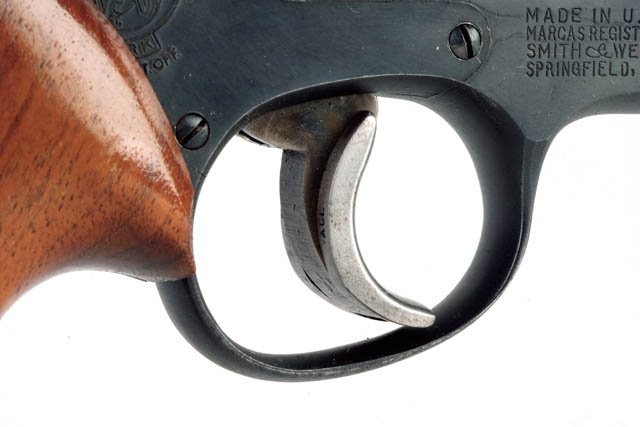
Unfortunately, all this hand fitting of parts and high-gloss finishing came with a price tag that put the .357 Mag. out of financial reach for many lawmen and their agencies. According to the classic book, "History of Smith & Wesson," by Roy Jinks, "…Inquiries from such agencies as the Texas Highway Patrol were directed to the possibility of manufacturing an inexpensive .357 Magnum handgun for use by law enforcement. [Smith & Wesson president] C.R. Helstrom discussed the problem with his engineers and it was determined that a revolver could be manufactured that had the smoothness of Smith & Wesson lockwork, but would do away with the cosmetic beauty of the revolver."
Thus, in 1954, the aptly named Highway Patrolman was introduced. It can best be described as a field grade of the more cosmetically enhanced .357 Mag. Its finish was a military-style matte blue, and a sandblasted brush texture replaced the more costly serrated topstrap and barrel rib. Actually, these non-reflective features made the Highway Patrolman a more practical law enforcement handgun. Only two barrel lengths were offered—4 and 6 inches. Shooting was aided by a grooved trigger and serrated backstrap and surprisingly, Smith & Wesson retained the adjustable micrometer rear sight, pairing it with a Baughman Quick Draw front ramp. The only options were standard or oversized walnut grips.
None of the cost-cutting external features detracted from the gun, for internally, it still possessed the fit and function of the more expensive .357 Mag. Consequently, the Highway Patrolman became one of the company's most popular revolvers, and remained in the line until 1986. Some rare variations include approximately five brushed-nickel salesman's samples and 25 nickeled guns with 5-inch barrels for the Florida Highway Patrol.
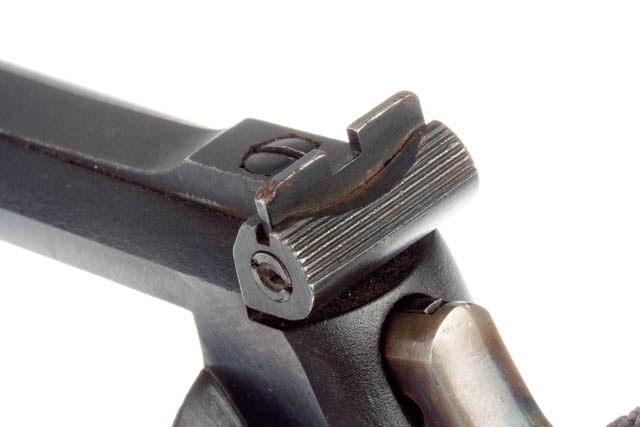
A few years ago, inspired by its rugged good looks and reputation for reliability, I obtained a used Highway Patrolman with a 6-inch barrel. I don't know how many rounds it digested before I got it, but with Winchester's 158-grain Jacketed Soft Points, it prints 2.5-inch groups at 25 yards—not a tack-driver, but good for close-range work, its intended purpose.
Ironically, throughout the "Highway Patrol" TV series, the star—Broderick Crawford—carried a Smith & Wesson Model 10 snubby.
In 1957 the revolver was renamed the Model 28. But for many of us, it will always be the Highway Patrolman. And that, as Crawford would say, is "10-4" by me.












